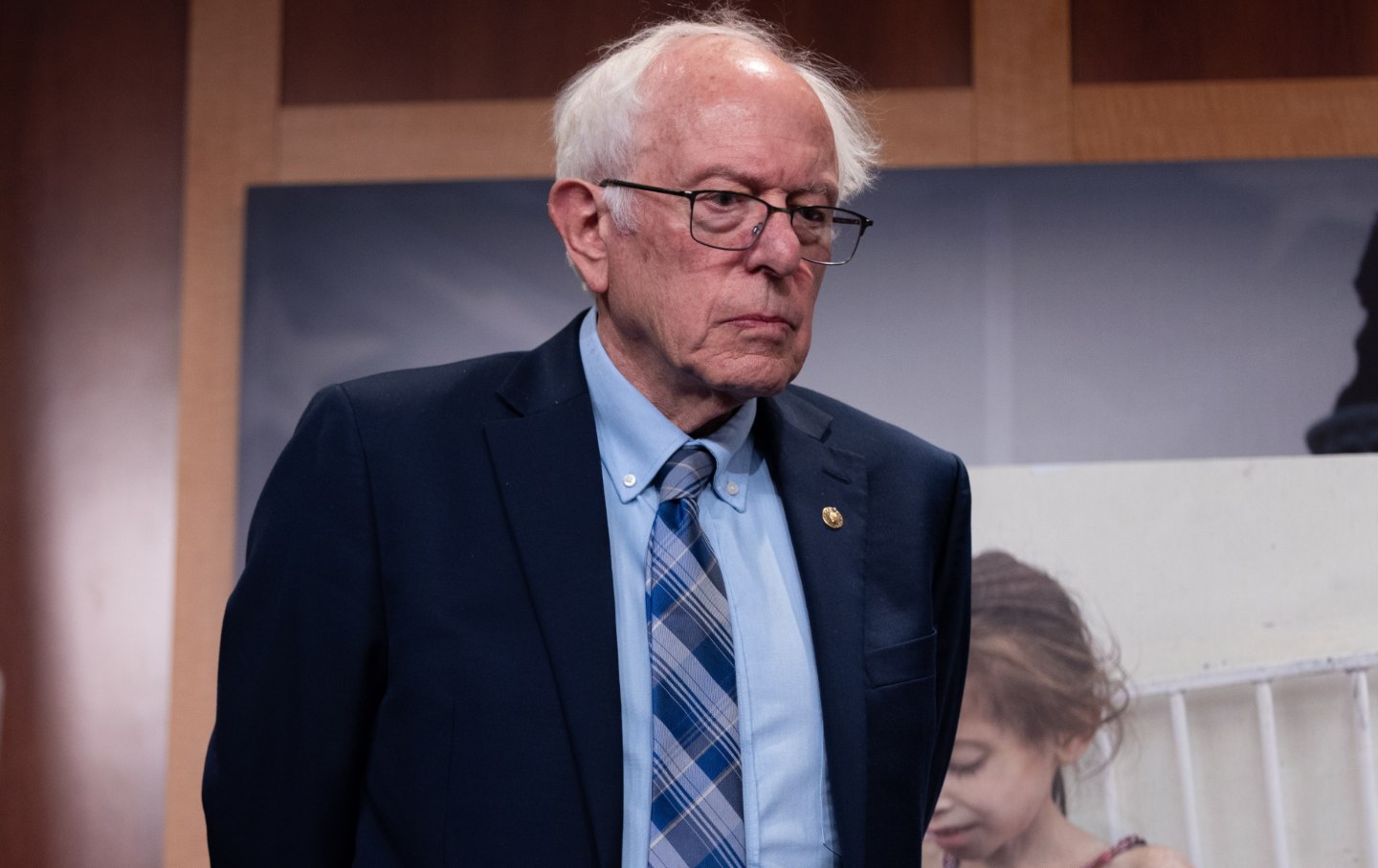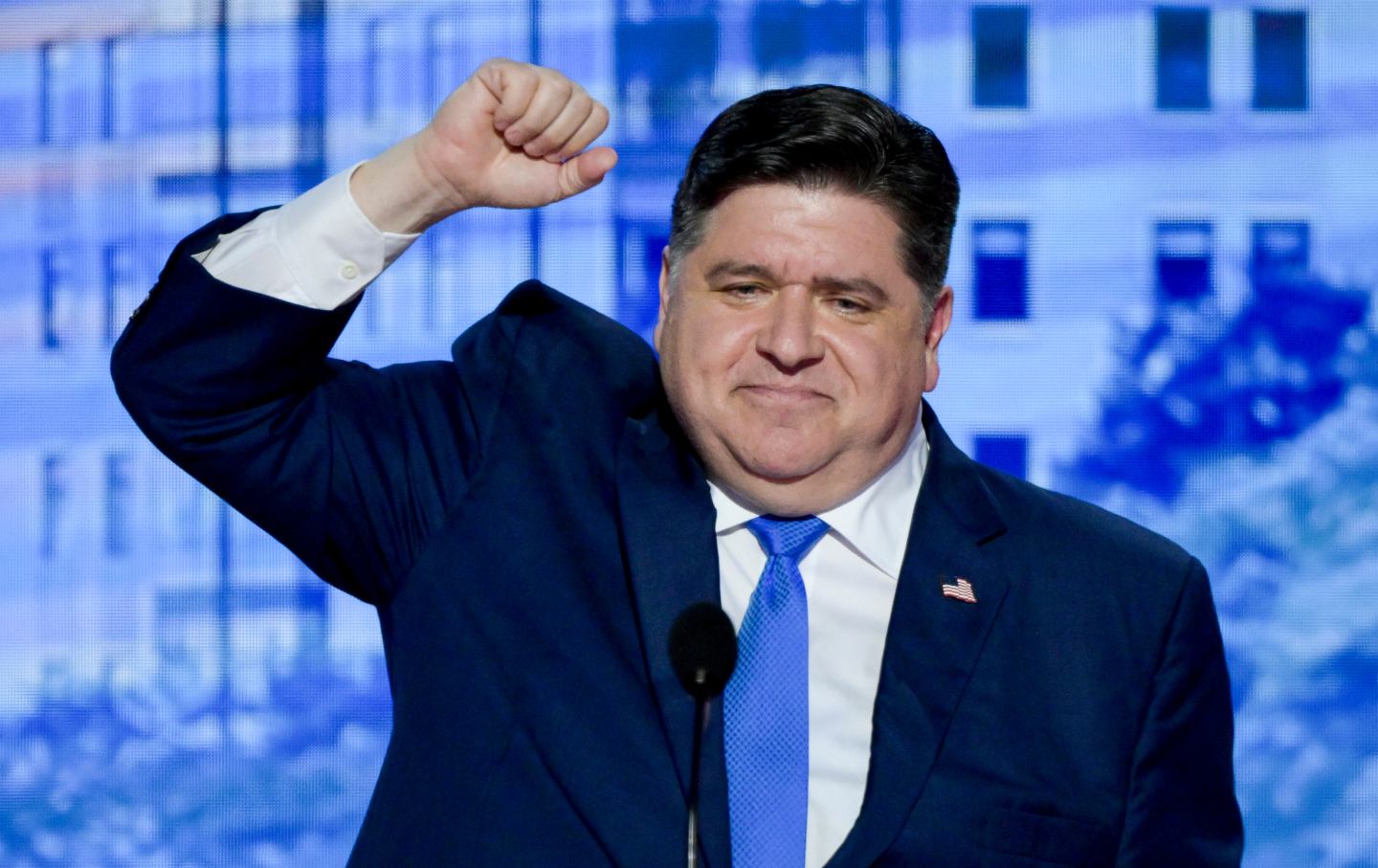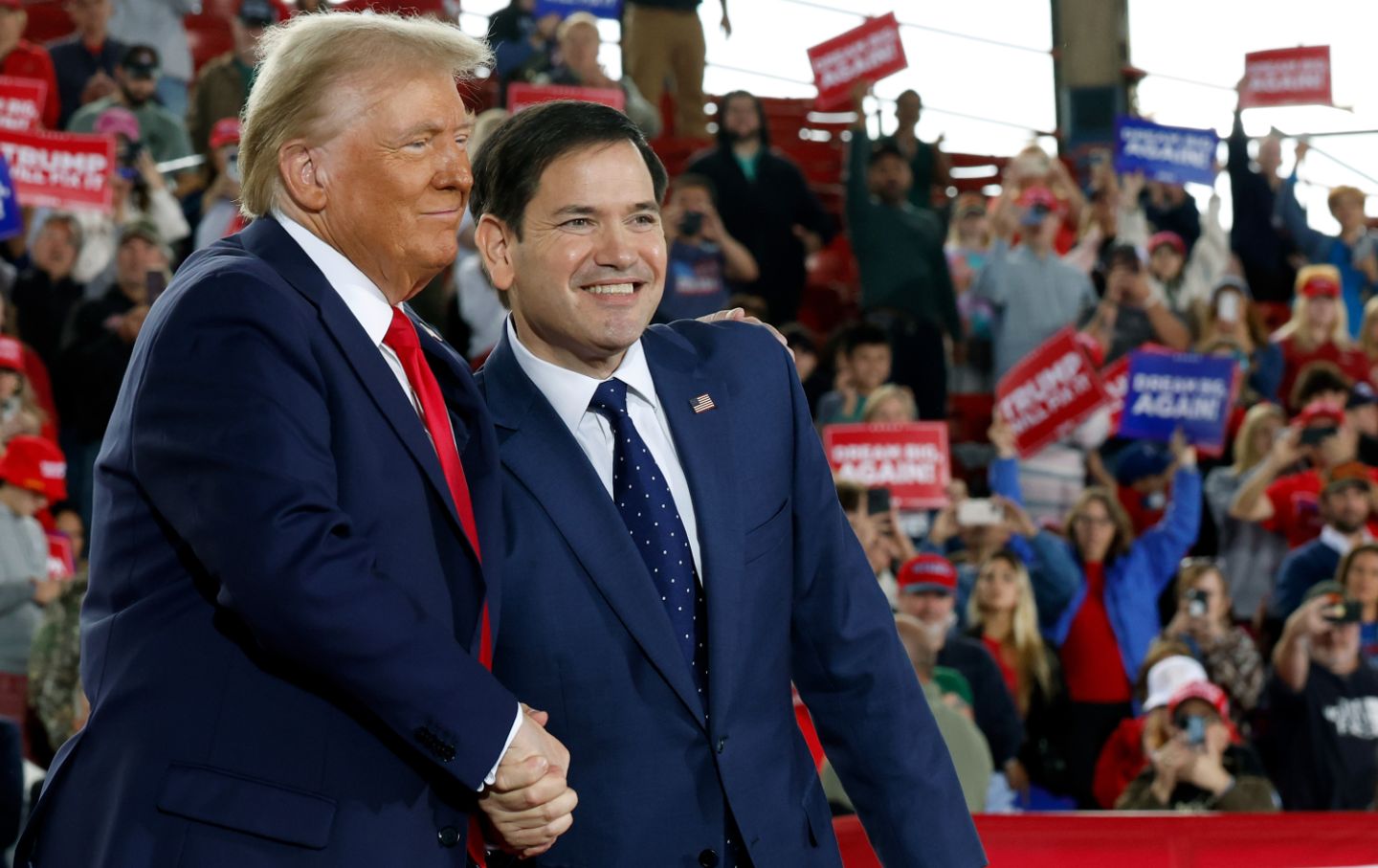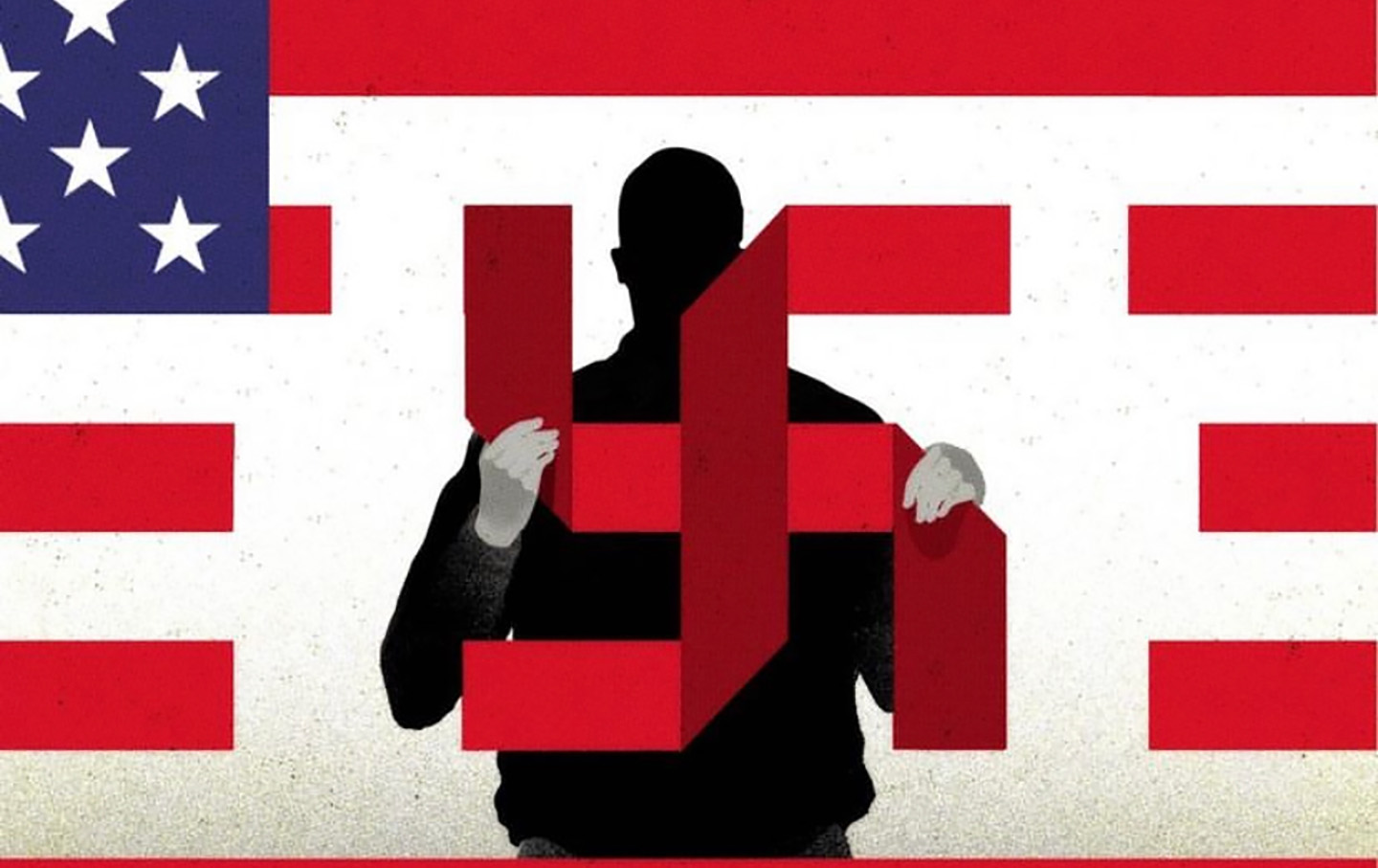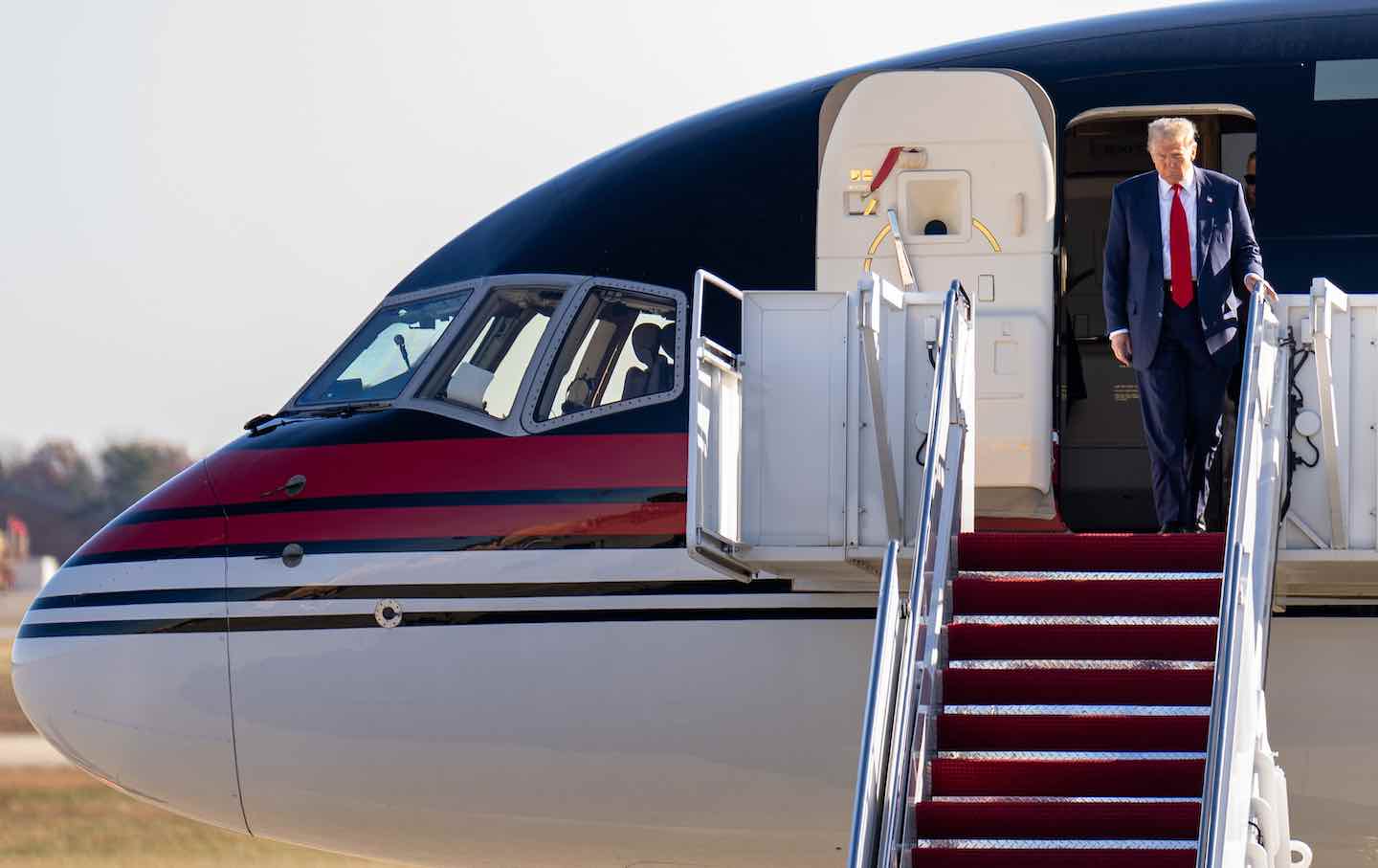The US Is a Civic Desert. To Survive, the Democratic Party Needs to Transform Itself.
The party should jettison its consultant class and move toward a local-membership model that would help to rejuvenate civic life across the country.
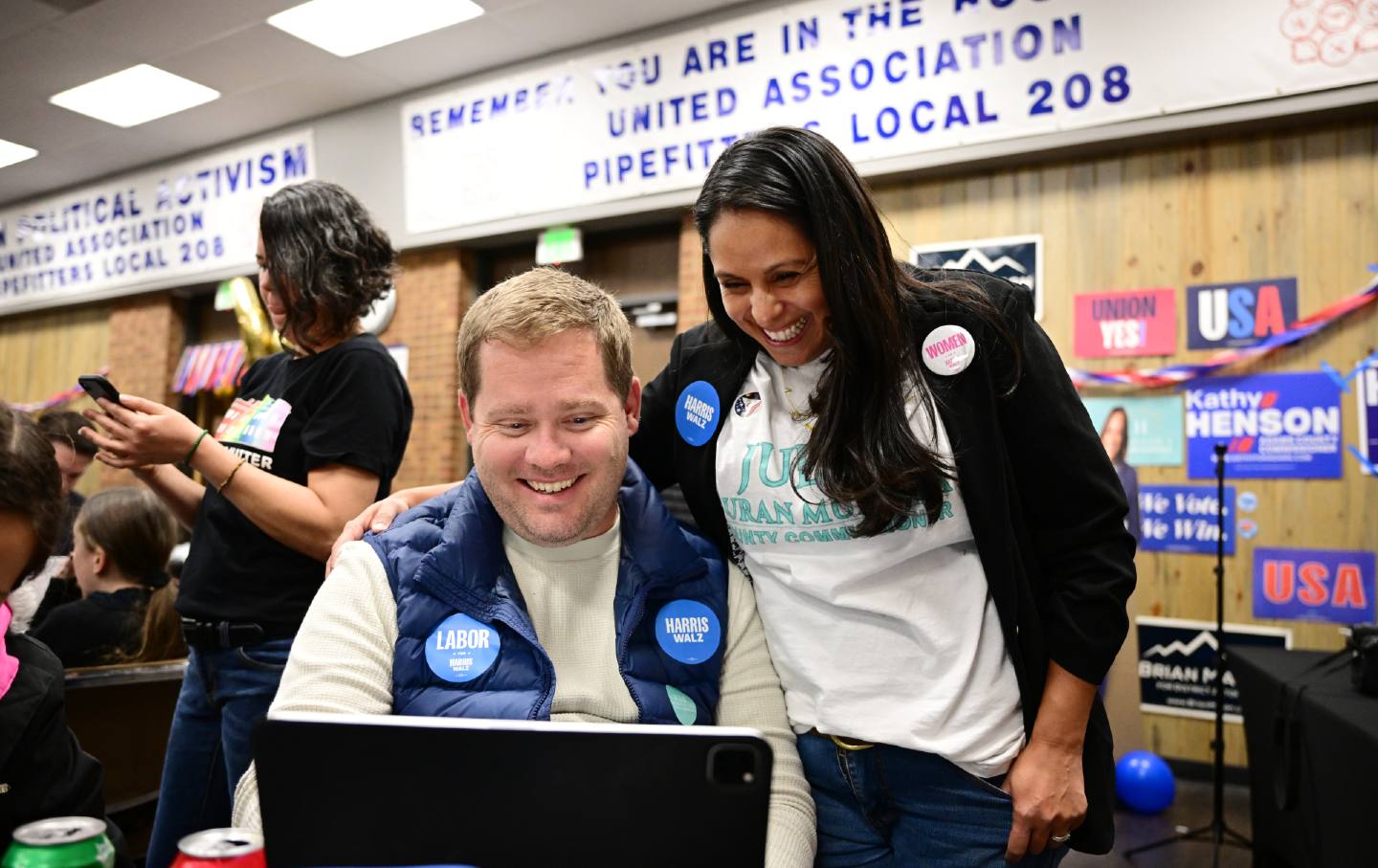
Adams County Commissioner candidate Julie Duran Mullica, right, checks election results with her husband, Kelly Mullica, at Pipefitters Local 208 in Denver, Colorado, on November 5, 2024.
(Hyoung Chang / The Denver Post via Getty Images)
Everyone is offering their postelection “if onlys.” Some are tactical: if only Kamala Harris had gone on Joe Rogan, if only she had ditched the Never Trump Republicans, if only we had a different candidate. Some are ideological: if only she ran further right, if only she had a more populist economic vision. And too many are fatalistic: if only America were different.
But one area of inquiry is not getting enough attention in our autopsies of the 2024 election: the civic structure of the Democratic Party. How did the way that our party is organized—the way that its members relate to the party, to each other, and to their local communities—affect Tuesday’s result? And how can we improve the flow of attention, money, leadership development, organizing work, and decision-making power to get better results in the future?
If I could make everyone at Democratic National Committee headquarters read one book, it would be Theda Skocpol’s Diminished Democracy: From Membership to Management in American Civic Life, published in 2003. In the early 20th century, according to Skocpol, civic life was mostly based in mass-membership organizations—religious congregations, unions, fraternal organizations (like the Elks or Rotary clubs), and political groups (think the NAACP or the League of Women Voters). They were made up of local chapters that hosted in-person meetings, managed annual calendars of neighborhood events, fostered friendships between members, and contributed to the places where they were based. These chapters are organized (or “federated”) into state and national conventions and committees. By pairing local participation with centralized coordination, the national leadership and the local membership could communicate ideas, concerns, mandates, and marching orders back and forth.
But American civic life started changing in the latter half of the 20th century. Mass communication became easier—and civic leaders fell in love with direct-mail fundraising campaigns. Federal politics became more complicated, and a class of expert activists who knew the ins and outs of legislative advocacy started professionalizing in Washington, DC. National groups began hiring “donor management” and “member relations” consultants to get the most dollars, votes, and petition signatures out of ordinary citizens. Civic organizations started wondering why they were bothering with all the local pageantry and community-building in the first place. Soon enough, Skocpol says, “membership” no longer meant meeting up with one’s neighbors; it meant being on a list—a list of people who would send checks to national managers in centers of power in exchange for a bumper sticker, an annual report, and the occasional call to action to do a few days of door-knocking, phone-banking, or letter-writing.
During the decades when this transition progressed, America’s civic ecosystem collapsed. As Robert Putnam extensively catalogs in Bowling Alone, many community organizations simply died off. Groups with political agendas had their local chapters turned into mass mailing lists. Unions were pacified and demobilized. Religious groups focused more on private piety and less on their role in broader civic life. Wealthy donors became more powerful. And most significantly, millions of Americans stopped feeling like public life was something of which they were a cocreator and co-owner.
The Democratic Party was swept up in this civic transition. Today, the party focuses almost exclusively on election campaign sprints optimized (to use terms popularized by civic theorists like Jane McAlevey and Hahrie Han) for short-term mobilizing (squeezing donations and volunteer hours out of current members) rather than for long-term organizing (fostering the stewardship, growth, and leadership development of the party’s membership). Instead of funding itself primarily through membership dues, the party offers fancy events for the wealthy and ceaseless, disrespectful texts for the rest of us. Parasocial relationships with celebrities and famous politicians are emphasized over real relationships with fellow neighbors and local chapter leaders. When you go to Democrats.org, clicking “Take Action” does not direct you to a page with your local Democratic committee’s meeting times and locations. The bolded call-to-action button on the party homepage is “DONATE,” not “JOIN.”
There are inspiring exceptions across the country, like Lancaster Stands Up, the upsurge in post-2016 organizing efforts led by middle-aged women (as spotlighted by historian Lara Putnam), and the national work of the Best Practices Institute (launched by the party in 2018 to provide civic training across the country). But too many local Democratic committees have lost the basic practices of good organizing, like tracking membership numbers over time, fostering bonds between members and with the wider local community, recruiting and developing new local leaders, and running good (and even occasionally fun) meetings where organizing is spurred year-round. While the star pollsters, data gurus, focus-group designers, fundraising-list managers, social-media mavens, cable-news stars, and speechwriting whiz kids at national campaign headquarters dazzled us each election cycle with their latest “game-changing” campaign tactics, the civic muscles in too many of our local chapters atrophied.
Take as an indicator how the party handled its last major crisis: the collective grappling with whether President Joe Biden should withdraw his candidacy. Party leadership never considered responding by asking the membership of the party—the county chairs who plan the monthly meetings, the super-volunteers who knock hundreds of doors and bank thousands of phone calls each election cycle—to deliberate locally and weigh in. Rather, the membership watched as George Clooney, Barack Obama, Chuck Schumer, Nancy Pelosi, and wealthy donors decided for them. When I floated to a group of party activists the possibility of every local chair hosting an emergency meeting to deliberate with their members about what the party should do and then transmit their responses to national party leaders, the most common response was: I don’t think we are even capable of gathering our own party membership to participate in such a discussion. This is not the sign of a healthy civic organization—and it urgently raises the question: How does this hollowed-out state affect the way we present, as a party, to the voters we are trying to reach and persuade?
Here’s one sketch of how we could begin to turn this around: The 4 Ms of party membership, each symbolic of a necessary mindset shift.
Popular
“swipe left below to view more authors”Swipe →First, Membership Cards. When you join the Labour Party in Britain, you get mailed a welcome packet, complete with a membership card and information about how to get more involved. The Democratic Party could learn from this: It should mean something to join the Democrats. We should track how our membership is doing year-over-year. Local chairs who are successful at increasing membership should be celebrated and invited to help languishing chairs. Fundraising should be done primarily through annual membership dues. Our web infrastructure should drive people toward not just ad hoc volunteer events but sustained membership in their local Democratic committee.
Second, Maps. There should be an accountable Democratic captain for every neighborhood in the country. Captains should be known by their neighbors, because they are so visible organizing for the party all year long (not just during election season). The most persuasive canvassers during a campaign, of course, are the neighbors who already know you and your community.
Third, Meeting Halls. Monthly meetings should be designed with utmost care. Best practices for making meetings, working groups, and annual calendars warm and engaging should be gathered and disseminated. Formal rules and procedures should not be fetishized at the expense of engaging new members. Meetings should be welcoming enough that new members should be unconcerned with telling those they run into around town, “Hope to see you at our next Democratic meeting!” Eventually, each local party should work toward building physical Democratic meeting halls in their district, which can become lively community centers not just for party activities, but also for the party’s broader local coalition of unions and progressive groups. (This could even be a useful place for the party’s donor class to chip in; they could siphon off some of the billions they are pouring into election campaigns into the building of meeting halls instead.)
Finally, Mutual Aid. The party should directly care for members and for the broader community. Democrats should do disaster relief, take on homeless-shelter shifts, cook food when members have a baby, welcome new immigrants to town, and host block parties throughout the year. Effective and inspiring community engagement should be celebrated statewide—and turned into multi-chapter efforts. This is especially important in red districts: Trust is earned not through perfectly targeted messaging in the short run but through in-person care over the long run.
This is all easier dreamed than realized. Fostering a culture of membership is a long-haul project—more like the planting of acorns than the planting of sunflower seeds. It will require a years-long commitment to the fits and starts of civic experimentation. But even a partial transformation to a structure based more in membership would help address many of the party’s challenges. Conflicts within the party could have more accessible venues through which they could be deliberated on and resolved. The party’s ideological vision could be more grounded in the interests of the broad populace (rather than of wealthy donors). Organic party leaders could rise more through their skills at organizing local communities than their ability to navigate and fundraise from elite networks. Media silos and cultural divides could have a shot at being broken through via sustained, real-world interactions at a local level. And, most significantly, apathy and cynicism could be combated as more of the civic creativity and energy of members is unleashed as local Democrats are invited to not only donate and vote but actually create the party together.
As Skocpol’s account shows, Democrats are not alone in navigating this challenge. Americans are living in a civic desert. Much of the social trust and many of the entities that once cultivated it have withered away—and we are left with an often barren public life. And, for good and for ill, the politicians who speak to the fears and despairs that arise in the civic desert are resonating more than the ones who speak as if we still live in last century’s high-trust, high engagement society.
In the short run, we need to do better at speaking to life in the desert. But in the long run, what can distinguish Democrats is that we could actually lay out a vision for a civic reforestation project—a vision for how civic life could be repopulated, for how social and institutional trust (and trustworthiness) could be rebuilt, and for how our nation’s cities, workplaces, and institutions could be better organized to invite more Americans to cocreate them (and, in turn, be better served by them).
Put simply, we could lay out a vision for rejuvenating our party’s namesake: democracy. And not just the democracy of elections—the democracy of everyday life, where we routinely and communally participate in power. But this vision will ring hollow until we embody it ourselves.
We cannot back down
We now confront a second Trump presidency.
There’s not a moment to lose. We must harness our fears, our grief, and yes, our anger, to resist the dangerous policies Donald Trump will unleash on our country. We rededicate ourselves to our role as journalists and writers of principle and conscience.
Today, we also steel ourselves for the fight ahead. It will demand a fearless spirit, an informed mind, wise analysis, and humane resistance. We face the enactment of Project 2025, a far-right supreme court, political authoritarianism, increasing inequality and record homelessness, a looming climate crisis, and conflicts abroad. The Nation will expose and propose, nurture investigative reporting, and stand together as a community to keep hope and possibility alive. The Nation’s work will continue—as it has in good and not-so-good times—to develop alternative ideas and visions, to deepen our mission of truth-telling and deep reporting, and to further solidarity in a nation divided.
Armed with a remarkable 160 years of bold, independent journalism, our mandate today remains the same as when abolitionists first founded The Nation—to uphold the principles of democracy and freedom, serve as a beacon through the darkest days of resistance, and to envision and struggle for a brighter future.
The day is dark, the forces arrayed are tenacious, but as the late Nation editorial board member Toni Morrison wrote “No! This is precisely the time when artists go to work. There is no time for despair, no place for self-pity, no need for silence, no room for fear. We speak, we write, we do language. That is how civilizations heal.”
I urge you to stand with The Nation and donate today.
Onwards,
Katrina vanden Heuvel
Editorial Director and Publisher, The Nation

